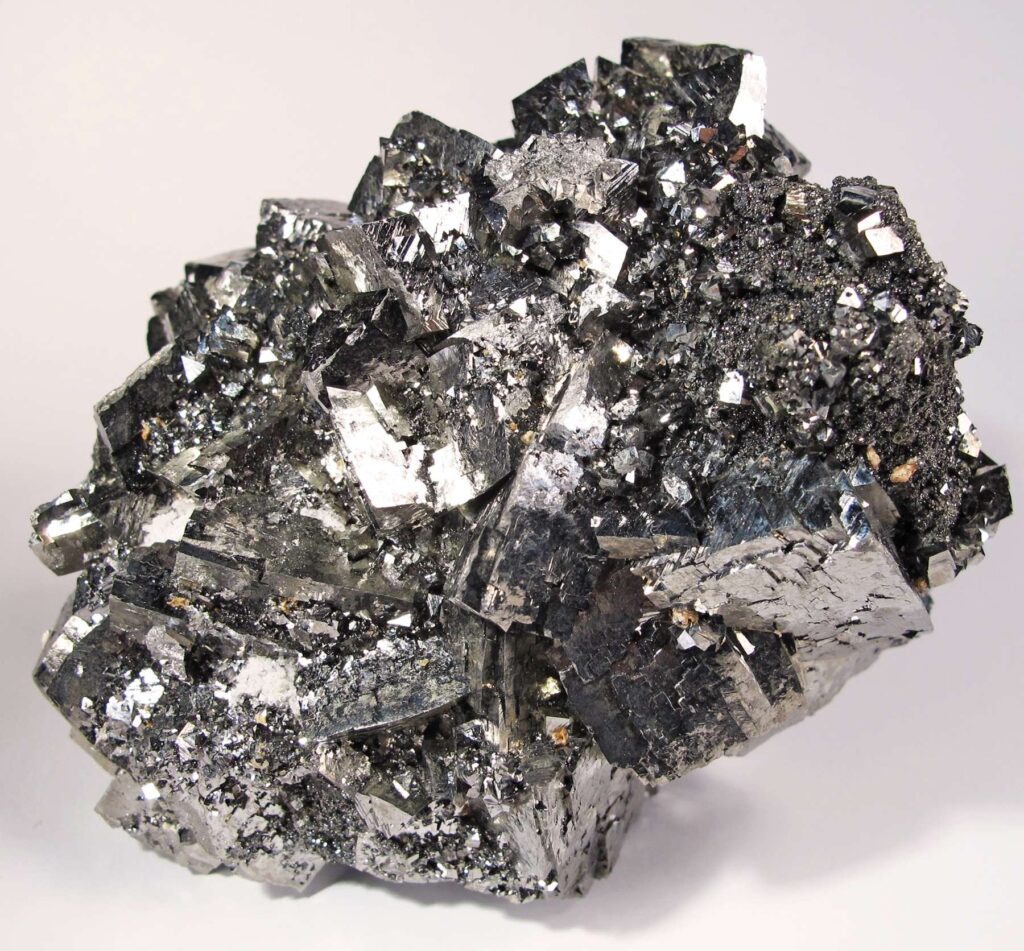The heaviest element known is oganesson (Og), with an atomic number of 118. Oganesson is classified as a transuranium element, meaning it has an atomic number higher than uranium (92) and is exclusively synthetic, not occurring naturally on Earth.
Moreover, it belongs to the actinide series of the periodic table, which includes elements from actinium (Ac) to lawrencium (Lr). Oganesson’s unique properties include an extremely short half-life and a shell structure that differs significantly from lighter elements.
Its shell structure exhibits a gas-like distribution of electrons and nucleons, unlike the distinct shell patterns observed in elements such as xenon or radon. Oganesson’s discovery and characterization contribute to our understanding of extreme atomic physics and the limits of the periodic table.
Properties of Heavy Elements

Properties of heavy elements, typically those with higher atomic numbers, exhibit distinct characteristics compared to lighter elements. Here’s a detailed explanation of their properties:
Atomic Structure
Heavy elements are like bigger versions of lighter elements. This is because heavy elements have more protons and neutrons packed into their atomic nuclei, which makes the nucleus larger and heavier.
The extra protons in the nucleus create more electrostatic repulsion (pushing apart due to similar charges), which expands the size of the nucleus. This expansion can affect how electrons arrange around the nucleus, influencing the chemical behavior of these elements.
Density and Stability
Heavy elements are denser and less stable compared to lighter elements. The density of an element is how tightly its atoms are packed together. Heavy elements have more mass packed into their nuclei, which makes them denser. However, having more protons in the nucleus also means there’s more electrostatic repulsion between these positively charged particles. This can make the nucleus less stable.
Because of this instability, they can undergo radioactive decay, where they emit particles or energy to become more stable. This decay process is what we call radioactivity. Heavy elements with more protons and neutrons tend to have shorter “half-lives,” meaning they decay more quickly.
In simpler terms, heavy elements are larger, denser, and less stable than lighter elements because they have more stuff (protons and neutrons) packed into their nuclei. This makes them interesting for studying nuclear physics but also means they can be radioactive and have unique chemical properties.
Radioactivity
Many heavy elements are radioactive, meaning they undergo nuclear decay to reach more stable configurations. This radioactivity can pose health risks and affect their practical applications.
Chemical Properties
Heavy elements often exhibit unique chemical properties. For instance, they can form complex compounds and exhibit different oxidation states than lighter elements.
Synthesis and Discovery
Heavy elements, unlike common elements found in nature like oxygen or carbon, are not naturally present on Earth. Instead, scientists create them in laboratories through a process called synthesis. This involves using powerful machines like particle accelerators to smash atoms together at very high speeds. These collisions can produce new elements that don’t exist naturally.
The discovery of heavy elements often requires sophisticated experiments and technology. Scientists look for specific reactions or particle emissions that indicate the creation of a new element.
Discovering these elements expands our understanding of the periodic table and the building blocks of matter.
Half-Life and Decay Modes
Heavy isotopes are types of heavy elements with extra neutrons that are less stable than lighter versions. Stability is measured by half-life, which shows how quickly half of the radioactive atoms in a sample decay into a more stable form. They have shorter half-lives, meaning they decay faster by emitting radiation until they become more stable. This knowledge is important in nuclear science, medicine, and environmental studies, where understanding isotope behavior helps us in different areas of research and application.
Heavy isotopes decay through different modes, including:
- Alpha Decay: The emission of an alpha particle (two protons and two neutrons), reducing the atomic number of the isotope.
- Beta Decay: The transformation of a neutron into a proton (or vice versa), leading to the emission of a beta particle (electron) or positron.
- Spontaneous Fission: The splitting of a heavy nucleus into smaller nuclei and neutrons without external stimulus.
These decay modes occur because the nucleus of a heavy isotope is unstable due to the imbalance of protons and neutrons. Through radioactive decay, heavy isotopes transform into more stable forms over time.
Transuranium Elements
Elements beyond uranium in the periodic table are termed transuranium elements. These elements have distinct properties and are important in nuclear science and technology.
Practical Applications
Despite their instability, heavy elements have applications in nuclear physics, medicine (e.g., radioactive isotopes for imaging and therapy), and materials science (e.g., superheavy elements for theoretical studies).
Discovery of Heavy Elements

The discovery of heavy elements represents a significant achievement in the field of nuclear physics and chemistry. Here’s an outline of the discovery process:
Early Discoveries
- Uranium: Uranium was one of the earliest heavy elements discovered. Its identification dates back to the late 18th century by Martin Heinrich Klaproth.
- Thorium: Thorium was discovered in 1828 by Jöns Jacob Berzelius.
Radioactivity and Transmutation
The study of radioactivity in the late 19th and early 20th centuries led to the discovery of new elements.
Radium and Polonium: Marie Curie and Pierre Curie discovered radium and polonium through their work on radioactivity.
Transuranium Elements:
In the 20th century, scientists began synthesizing elements beyond uranium, known as transuranium elements.
- Neptunium (Np): Neptunium was the first synthetic transuranium element discovered in 1940 by Edwin McMillan and Philip Abelson.
- Plutonium (Pu): Plutonium was discovered in 1940 by Glenn T. Seaborg, Edwin McMillan, Joseph W. Kennedy, and Arthur Wahl.
Synthesis of Heavier Elements:
As technology advanced, scientists used particle accelerators and nuclear reactors to create heavier elements through nuclear fusion reactions.
Lawrencium (Lr): Lawrencium, one of the heaviest synthetic elements, was first synthesized in 1961 by Albert Ghiorso and colleagues at the Lawrence Berkeley National Laboratory.
Discovery Challenges
Discovering heavy elements poses significant challenges due to their instability and short half-lives. Scientists must use sophisticated techniques to detect and characterize these elements, often relying on mass spectrometry and other analytical methods.
Recent Discoveries
Advances in nuclear physics have led to the discovery of superheavy elements like oganesson (Og), which was synthesized in 2002 by a team of Russian and American scientists at the Joint Institute for Nuclear Research (JINR) in Dubna, Russia.
References
- E. R. Scerri, The Periodic Table: Its Story and Its Significance (Oxford University Press, New York, 2007)[WorldCat].
- See, e.g., “The History of the Periodic Table,” Royal Society of Chemistry, http://www.rsc.org/education/teachers/resources/periodictable.
- Y. T. Oganessian et al., “Synthesis of the Isotopes of Elements 118 and 116 in the 249Cf and 245Cm + 48Ca Fusion Reactions,” Phys. Rev. C 74, 044602 (2006).
- P. Jerabek, B. Schuetrumpf, P. Schwerdtfeger, and W. Nazarewicz, “Electron and Nucleon Localization Functions of Oganesson: Approaching the Thomas-Fermi Limit,” Phys. Rev. Lett. 120, 053001 (2018).
- P. Pyykkö, “Theoretical Chemistry of Gold. III,” Chem. Soc. Rev. 37, 1967 (2008).
- F. Calvo, E Pahl, M. Wormit, and P. Schwerdtfeger, “Evidence for Low-Temperature Melting of Mercury Owing to Relativity,” Angew. Chem. 52, 7583 (2013).
- A. D. Becke and K. E. Edgecombe, “A Simple Measure of Electron Localization in Atomic and Molecular Systems,” J. Chem. Phys. 92, 5397 (1990).
- M. Bender, W. Nazarewicz, and P.-G. Reinhard, “Shell Stabilization of Super- and Hyperheavy Nuclei without Magic Gaps,” Phys. Lett. B 515, 42 (2001).
Final Words
Oganesson is a big deal in atomic science. It’s the heaviest element we know of, and learning about it teaches us a lot about superheavy elements and how they work. Its discovery shows us how important relativistic effects are in shaping atomic structure. Its unusual shell structure makes us rethink how electrons are spread out in heavy elements.
Looking ahead, more research on oganesson and similar superheavy elements will help us learn even more about physics and expand our knowledge of the periodic table. This exploration opens up exciting possibilities for new discoveries in science.
